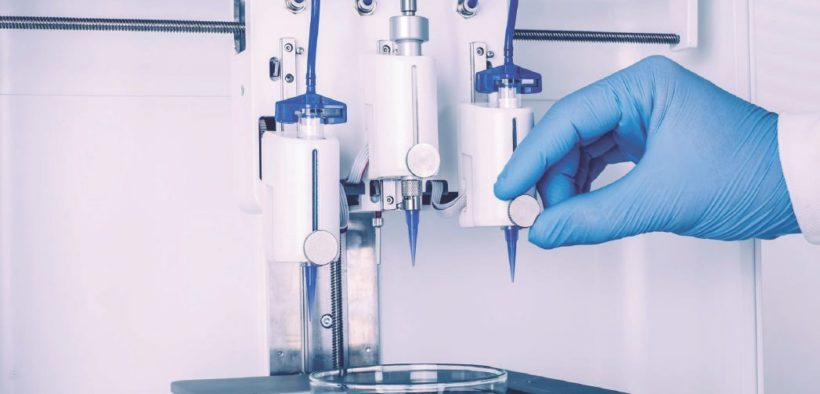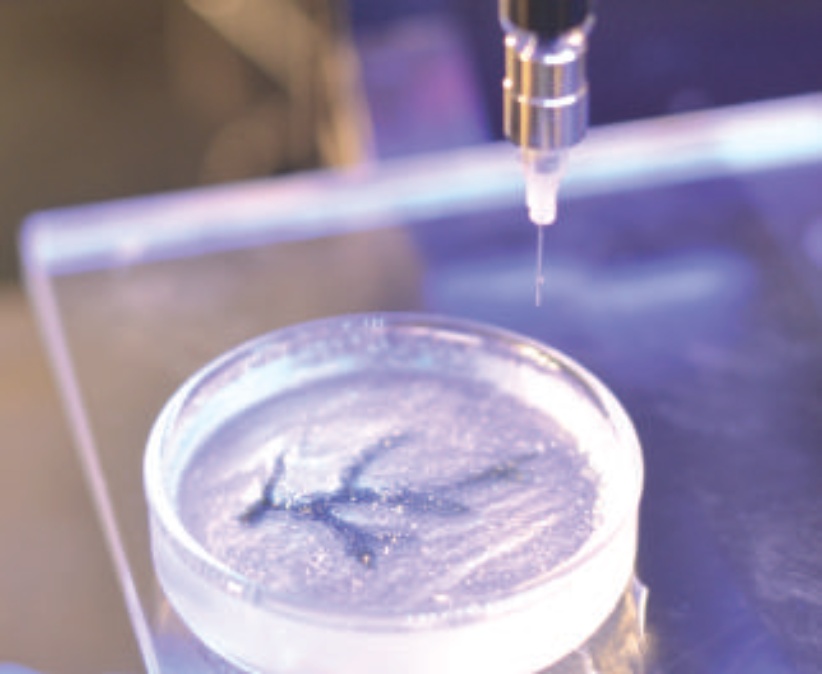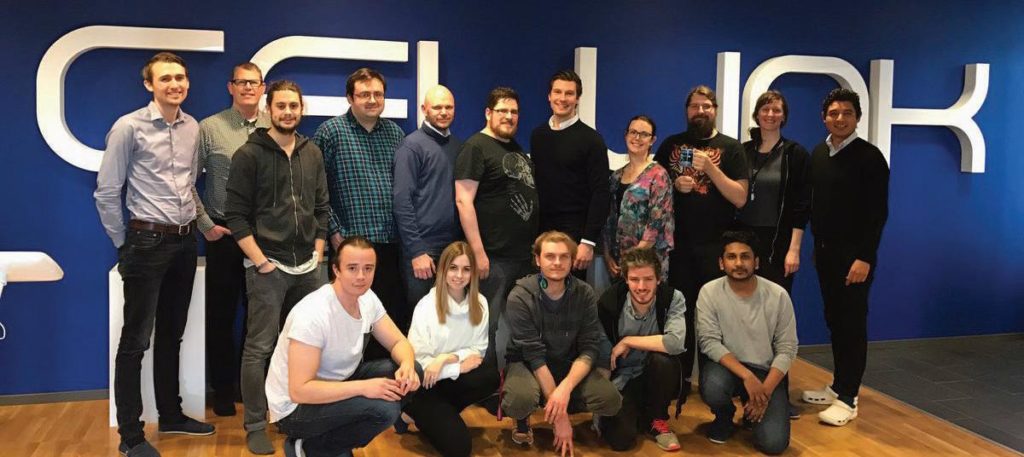Magic Ink That Fights Cancer

“Cutting edge developments in bioprinting by Swedish biotech company Cellink is helping make cancer research faster and more accurate.”BY MERSHAN
Swiss biotech company Cellink is the new rising star of the healthcare industry. Armed with cutting edge innovations in 3D bioprinting, and with its latest trailblazing move into a reproduction of patient tumor cells that will aid cancer drug research, the two-year-old Scandinavian startup is dreaming and selling big. “We are always excited when our technologies are used to accelerate research and enable new advancements. The oncology research field is one of the major focus areas for us and we see a strong benefit of using our bioprinting platform to develop better and more realistic cancer tissue models so that we can develop better treatments,” says Erik Gatenholm, co-founder and CEO of Cellink.
The 29-year-old recently made it into the Forbes 30 Under 30 list. He has been experimenting with 3D printing since the age of 16. However, Gatenholm discovered the unique possibilities of bioprinting only after witnessing a recreation of cartilage in his father’s lab at the Chalmer’s University of Technology in Gothenburg. He was then introduced to Hector Martinez, one of his father’s students doing a Ph.D. in tissue engineering. It was only when they decided to start bioprinting tissue that they realized the glaring deficit in the supply of bio-ink.
Gatenholm says he was taken aback to know that practically nobody was manufacturing the product. And that served as the impetus behind Cellink. The company was formed soon after, in January 2016.
“THE ONCOLOGY RESEARCH FIELD IS ONE OF THE MAJOR FOCUS AREAS FOR US AND WE SEE A STRONG BENEFIT OF USING OUR BIOPRINTING PLATFORM TO DEVELOP BETTER AND MORE REALISTIC CANCER TISSUE MODELS SO THAT WE CAN DEVELOP BETTER TREATMENTS.
”Erik Gatenholm
CEO, Cellink
What makes Cellink unique?

The company has made great advances in its surprisingly short span of existence. Nine months after being founded in 2016, Cellink had already made it into the Nasdaq league, following an envious 1070 percent oversubscribed IPO. The uncommon surge is mostly attributed to Cellink’s status of being the world’s first producer of standardized bioink (or biological ink) that can be used across different printers to produce different types of cell tissue.
The Bio X printer developed by Cellink enables researchers to print organic tissue. Yes, you read that right. Priced at a flexible range of $10,000, it has been purchased in over 25 countries, mostly by universities and a few private customers. The delicate temperature control of the printer allows for an advanced quality of printing. Unlike most other bioprinters, the versatile Bio X allows for any bioink to be used, regardless of its viscosity. Far ahead of and different from those manufactured by competitors like Organovo, the product can also be used on a universal range of bioprinters as well as independent of any device.
Since its inception, Cellink has also won numerous awards for its innovation, the latest being the winner at the Nordic Startup Awards 2017. Regardless of its many attributes, the core of the startup’s success is its unique marketing model through which it caters to both top-end customers like MIT and Harvard, as well as hobbyists. Furthermore, the company has been successful in cutting costs by using cost-effective printer components rather than opting for expensive motor rail systems.
Cellink Bioink
Cellink’s biological ink, developed by Gatenholm and Martinez, is the world’s first standardized bioink, made primarily from nano cellulose alginate, extracted in part from seaweed. While it can be used in an array of industries ranging from cosmetics to pharmaceutics, its most relevant application lies in the field of drug research and organ transplants. Cancer therapies so far have been limited by researchers’ understanding of how cancer cells grow and develop in threedimensional tumors.
As part of its latest collaboration with France-based CTi Biotech, the biological ink from Cellink will be used to recreate models of a patient’s tumor, thus helping researchers pinpoint the exact nature of cancer. Needless to say, this is a huge step towards personalized and accurate cancer medicine. Standardized tissue reproduction is another advantage of Cellink’s bioink. Through this method, the same tumor cells may be printed hundreds of times, thus increasing the scope and range of medications that can be applied.
Dreaming On
Gatenholm is a practical dreamer. Locating himself at the edge of science fiction and reality, his vision for the company is only widening with his 16-hour work schedules. From organ transplants to improving lifespan through cell regeneration, it is a wide constellation of achievable magic. Gatenholm isn’t sure where the cure for cancer is going to come from. For all he knows, it could be India, Japan, South America or New York. But he wants to give everybody a good chance and he wants Cellink to aid and birth that magical event.

















